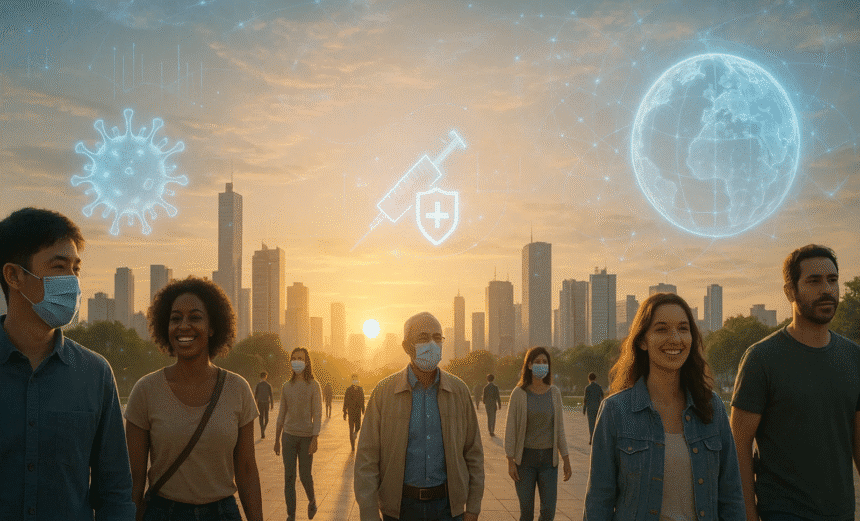The COVID-19 pandemic, one of the most significant global crises in modern history, began in late 2019 when a novel coronavirus, later named SARS-CoV-2, was first detected in Wuhan, China. What started as a cluster of pneumonia-like cases quickly escalated into a worldwide outbreak. The World Health Organization (WHO) declared it a global pandemic on March 11, 2020, as infections spread rapidly across continents through worldwide travel and human contact. After more than three years of devastating impact, the WHO finally declared the end of the global health emergency on May 5, 2023, marking a new chapter in humanity’s recovery, though the virus continues to circulate at lower levels.
The pandemic spread globally due to several key factors: high transmissibility, asymptomatic spread, and a lack of pre-existing immunity in humans. Early containment efforts were complicated by limited testing, misinformation, and overwhelmed health systems. Governments worldwide imposed lockdowns, travel bans, and social distancing measures. Schools, businesses, and public spaces closed as countries sought to “flatten the curve.” Scientists raced to develop vaccines, and by late 2020, the first doses were rolled out, bringing hope amid uncertainty. Despite this, new variants of the virus emerged, challenging vaccination efforts and prolonging the crisis.
In terms of statistics, the scale of COVID-19’s impact was staggering. The World Health Organization recorded hundreds of millions of confirmed cases worldwide and millions of deaths, though excess-mortality studies suggest the real toll may be significantly higher, reaching tens of millions when indirect effects are included. The pandemic impacted nearly every aspect of daily life, from healthcare and the economy to education and mental well-being. It revealed vulnerabilities in global health systems and deepened inequalities between nations, especially in vaccine access and healthcare infrastructure.
The effects of COVID-19 were far-reaching. Health systems in many countries were pushed beyond capacity as hospitals overflowed with patients. Non-COVID medical treatments were delayed, and mental-health issues soared due to isolation, fear, and loss. Economically, the world saw its sharpest contraction in decades. Global supply chains broke down, small businesses shuttered, and millions lost their jobs. Entire industries, tourism, aviation, and hospitality, were devastated. Education systems faced unprecedented disruption, with billions of children affected by school closures. Meanwhile, remote work and digital technologies surged, fundamentally reshaping the way people work and communicate.
Socially and culturally, the pandemic changed how humanity interacts and perceives health. Wearing masks, sanitising hands, and maintaining distance became everyday habits. Public awareness of hygiene and public health grew substantially. Yet, the pandemic also highlighted stark inequalities: wealthier nations recovered faster, while poorer countries struggled with limited access to vaccines and medical resources. Despite the pain and disruption, the crisis inspired remarkable acts of solidarity, scientific collaboration, and innovation.
Today, as the world transitions into a post-pandemic phase, COVID-19 is increasingly treated as an endemic disease, one that will remain with us but can be managed through vaccination, monitoring, and medical care rather than emergency lockdowns. Governments and global organisations are prioritising pandemic preparedness, improving early-warning systems, and strengthening healthcare resilience to prevent future crises. Economically, recovery is underway but uneven, with developing nations still facing challenges.
The long-term health impacts, including “Long COVID,” continue to affect millions, reminding us that the end of the emergency does not mean the end of the disease. The pandemic’s legacy is a world that is more connected, cautious, and conscious of its vulnerabilities. It has taught humanity critical lessons about cooperation, science, and adaptability. As we rebuild, the focus has shifted to sustainability, mental health, and resilience. The world after COVID-19 is not the same as before, but it carries hope for a future shaped by shared experience, stronger global unity, and a renewed appreciation for life and health.


















